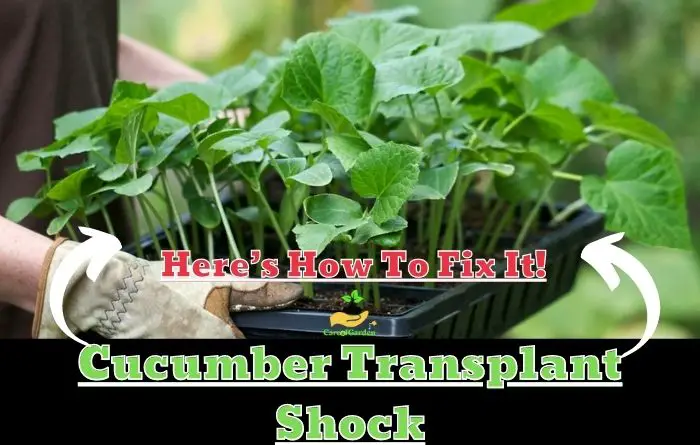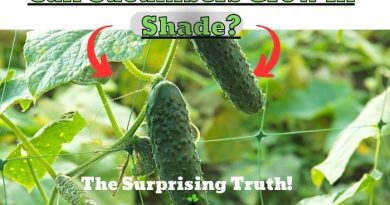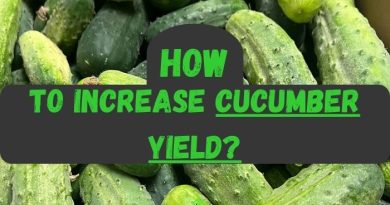Cucumber Transplant Shock: 5 Causes & How To Overcome It!
As a gardener, you’ve likely encountered the challenge of dealing with Cucumber Transplant Shock. Join me in this blog post as we explore the signs and causes of Cucumber Transplant Shock and, most importantly, the effective solutions to nurse your cucumber plants back to health.
Cucumber transplant shock can be caused by environmental stress, pests and diseases, and improper planting techniques. Symptoms include wilting, yellowing leaves, and stunted growth. To treat cucumber transplant shock, isolate affected plants, adjust environmental conditions, boost nutrients, protect against pests and diseases, and offer support and care. Recovery time can vary, but with proper care and attention, most cucumber plants should be able to recover and thrive in their new location.
Signs of Cucumber Transplant Shock
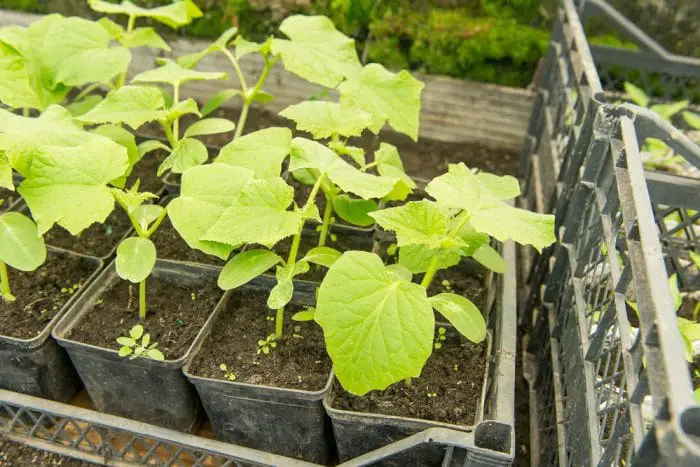
Cucumber transplant shock can be a distressing experience for growers, as it presents a range of unmistakable symptoms:
| Signs of Cucumber Transplant Shock | Description |
|---|---|
| Wilting | Leaves and stems appear droopy and lack turgidity due to insufficient water uptake. |
| Yellowing Leaves | Leaves lose their vibrant green color, turning yellow due to the plant’s stress response. |
| Stunted Growth | Cucumber plants exhibit slow or stagnant growth, struggling to develop new leaves and vines. |
| Leaf Loss | Premature leaf shedding causes withering, discoloration, or even complete leaf loss. |
| Delay in flowering or fruiting | Cucumber plants experience a delay in producing flowers and fruits as a result of transplant shock. |
If these symptoms are left unaddressed, the plant’s survival may be at risk. However, with prompt and appropriate measures, it is possible to nurse the cucumber plants back to health and prevent further deterioration.
Causes of Cucumber Transplant Shock
1. Root Disturbance
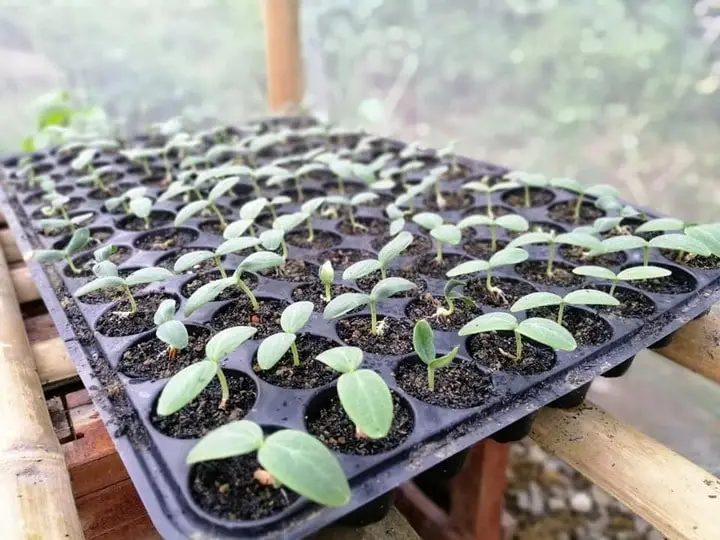
The first cause of transplant shock is when the roots of cucumber seedlings are disturbed during transplantation. Such disturbances can harm your cucumber roots, hindering their ability to effectively absorb nutrients and water.
I know this will result in stunted growth and the leaves turning yellow. To avoid root disturbance, it is crucial to handle your cucumber seedlings, with care during transplantation and take precautions not to damage their roots.
2. Environmental Stress
When cucumbers are relocated from one place to another, they confront unfamiliar environmental conditions, including variations in temperature and humidity. These new conditions can cause undue stress, potentially leading to transplant shock.
3. Improper Soil Conditions
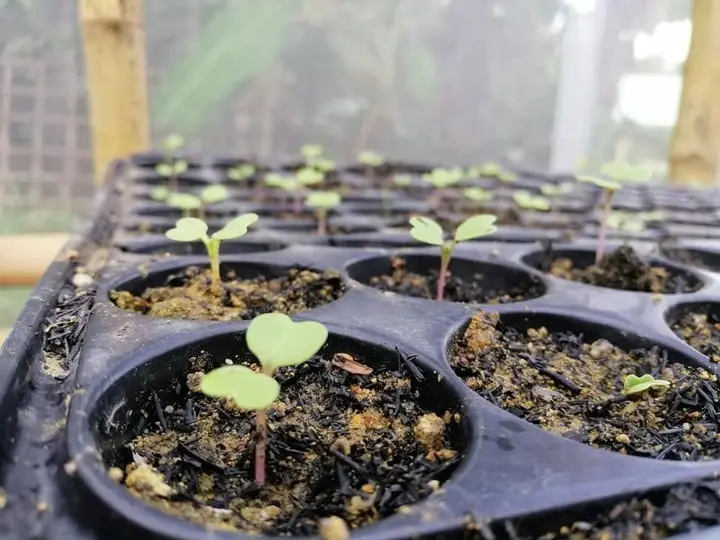
Soil conditions can significantly contribute to transplant shock. For instance, if the soil is either too dry or too wet, cucumber plants may struggle to absorb the necessary water or nutrients for healthy growth, making them more susceptible to transplant stress and shock.
Similarly, densely packed or clay-heavy soil can obstruct your cucumbers’ ability to establish a healthy root system, thereby enhancing the risk of transplant shock.
4. Nutrient Deficiency
Nutrient deficiency is another common cause of transplant shock in cucumber seedlings. When I’ve transplanted cucumber seedlings, I’ve noticed that they might not have the same nutrient availability as they did in their previous spot.
This nutrient shortage can result in stunted growth and hinder the overall health of the cucumbers. To address this issue, I’ve learned the importance of preparing the soil in the new location, by making sure it is rich in nitrogen, phosphorus, and other essential nutrients.
5. Inadequate Hardening
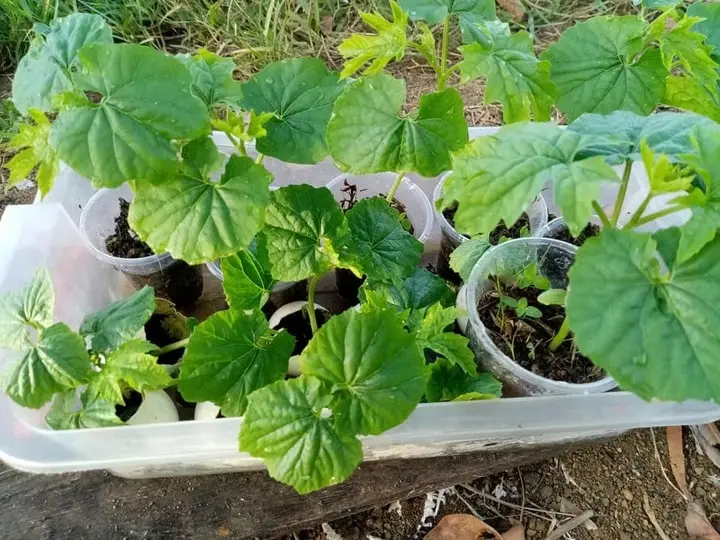
Inadequate hardening off can cause cucumber transplant shock by exposing the seedlings to sudden changes in temperature, light, and moisture. Hardening off is the process of gradually acclimating plants to their new environment before transplanting them.
If cucumber plants are not properly hardened off prior to transplantation, they may experience stress.
For example, if I were to shift my cucumber seedlings from a cozy, warm, and sheltered indoor environment to a colder and more exposed outdoor setting, I would notice that they struggle to adapt.
Similarly, if I don’t provide them with gradual exposure to increased sunlight, I’d observe issues like sunburn and wilting in my cucumber plants. These symptoms are clear indicators of transplant shock, and it’s essential to avoid them by ensuring a proper hardening-off process.
6. Damage During Transplantation
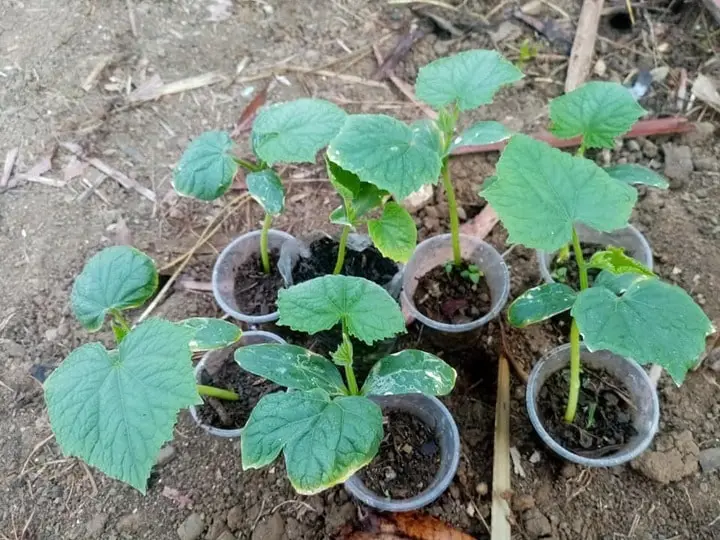
Lastly, the transplant process itself can result in transplant shock if not handled carefully. As the plants are moved, their roots and stems may sustain damage, disrupting their ability to draw up water and nutrients.
This can stress the cucumber seedlings and increase their vulnerability to transplant shock. By understanding these factors, we can take appropriate steps to reduce the chance of transplant shock in our cucumber plants.
How to Help Cucumber Plants Recover from Transplant Shock

When I encounter cucumber plants experiencing transplant shock, I follow several steps to assist them on their road to recovery:
1. Identify the symptoms
The first step is assessing the situation. I carefully examine the cucumber plants for signs of transplant shock, like wilting, yellowing leaves, stunted growth, or delayed flowering and fruiting. This helps me understand the extent of the issue.
2. Isolate the Affected Cucumbers
If I identify any affected cucumber plants, I make sure to isolate them from the healthy ones. This prevents the potential spread of any problems and allows me to focus on the recovery of the stressed plants.
3. Prune and Trim the Cucumber’s Damaged Leaves.
In cases where I notice damaged or yellowing leaves, I opt for trimming. Pruning these parts redirects the plant’s energy toward healthier areas and helps reduce overall stress.
4. Protect from Extreme Temperatures
To alleviate environmental stress that might be contributing to transplant shock, I provide shade or adjust watering.
Protecting your cucumber plants from extreme heat or cold is essential during their recovery from transplant shock. Exposure to extreme temperatures can exacerbate stress and render the plants more vulnerable to shock.
Shield the cucumbers from excessive heat by using shade cloth or plastic sheeting. Similarly, during colder weather, provide a protective cover to shield them from chilling temperatures.
By safeguarding them from temperature extremes, you provide an optimal environment for their recovery.
5. Water to Moist Soil
One vital step in aiding cucumber plants recovering from transplant shock is to ensure they receive proper hydration.
I pay close attention to watering, ensuring the plants get the right amount of moisture. Consistency is key; I aim to keep the soil consistently moist.
This not only helps prevent additional stress but also makes the plants less susceptible to shock. Adequate watering is crucial in supporting their journey to recovery.
6. Provide Nutrients to Cucumbers
Nutrient deficiency can be a cause of transplant shock. To aid cucumber plants in recovering from the stress of transplanting, it’s vital to provide them with a balanced fertilizer. This will supply the necessary nutrients needed for growth and the establishment of healthy roots.
To address this, I incorporate a well-rounded, water-soluble fertilizer into the soil which will help my cucumber’s overall recovery and rejuvenation, supporting their journey toward vitality.
7. Protect against pests and diseases
Weakened cucumber seedlings are more susceptible to pests and diseases. To safeguard the cucumbers, I employ organic insecticides or fungicides when necessary.
8. Support and Care
To reduce stress on the plants, I offer structural support, like staking or trellising. This prevents them from bending or breaking and helps maintain their well-being. Consistent care, including proper watering and maintenance, is essential during the recovery phase.
9. Be patient
Recovering from transplant shock is indeed a gradual process, and patience is key. I always remain patient and vigilant while nursing my cucumber plants back to health.
It’s essential to understand that healing from transplant shock isn’t an overnight transformation. Be prepared for several weeks of nurturing and care for your cucumber plants. During this recovery period, I keep a close watch on their progress and provide the necessary attention.
I pay special attention to any signs of improvement as well as any potential issues that may crop up. By observing their growth and tending to their needs during this critical phase, you significantly boost their chances of regaining strength and vitality.
Remember, the journey to full recovery may take time, but it’s well worth the effort.
10. Gradual Reintroduction
Once the cucumber plants show positive signs of recovery, I slowly reintroduce them to their intended planting location. This gradual acclimation prevents them from experiencing shock again and ensures their long-term health and productivity.
When should I perform the cucumber transplant to avoid shock?
According to the sources I found the best time to transplant cucumber seedlings to avoid shock is when they are about 3-4 weeks old and have developed at least two to three true leaves and the weather is consistently warm.
It is important to wait until the danger of frost has passed and the soil has warmed up to at least 60°F. If possible, transplant your cucumber plants outdoors in the late afternoon or evening, ideally on an overcast day. This gives them a little time to adjust before facing a full day of sunlight.
| Cucumber Seedlings Transplant Requirements | Details |
|---|---|
| Time of Day | Transplant in the late afternoon or early evening. |
| Temperature | Transplant when temperatures are consistently above 60°F (15°C) during the day and above 50°F (10°C) at night. |
| Weather | Choose a warm, overcast day to transplant. |
| Soil Moisture | The soil should be moist but not waterlogged. Water the cucumbers a few hours before transplanting if necessary. |
| Soil pH | The soil should have a pH between 6.0 and 7.0 for optimal growth. |
| Fertilization | Fertilize the soil a few days before transplanting to provide nutrients for the new plants. |
| Hardening Off | Gradually expose the seedlings to outdoor conditions for a week before transplanting to help them adjust to the new environment. |
| Transplant Method | Use a gentle transplanting method to avoid damaging the roots. |
How long does cucumber transplant shock last?
Cucumber transplant shock typically lasts for about 7 to 14 days, although the duration can vary depending on several factors, such as the health of the seedling before transplanting, the growing conditions, and how well the plant is cared for after transplanting.
Can Cucumber Plants Recover From Transplant Shock?
Yes, according to my research and experience cucumber plants can recover from transplant shock if the damage is not too severe and the issue is identified and addressed early.
However, if the cucumber roots are severely damaged the chances of recovery are lower, and the plant may not survive. Cucumbers will show signs of recovery from transplant shock within a few days or weeks if the underlying problem is corrected.
How long does it take for a cucumber to recover from transplant shock?
In general, it can take anywhere from a few days to several weeks for cucumber plants to recover from transplant shock.
If the shock was mild and the plants were otherwise healthy, they may recover within a few days to a week. However, if the shock was severe or the plants were already weakened by other factors, it may take several weeks for them to recover fully.
How to Avoid Cucumber Transplant Shock
To prevent cucumber transplant shock in the future, there are several steps you can take:
- Choose an Optimal Growing Location: Selecting the right location for your cucumber plants is crucial in preventing transplant shock. Look for a spot that offers ideal growing conditions, including well-draining soil, ample sunlight, and good air circulation. These factors contribute to the overall health of the plants and reduce their vulnerability to stress.
- Pre-Transplantation Preparation: Thoroughly water the plants before transplanting to ensure they are adequately hydrated. This helps the plants withstand the stress of transplantation and minimizes the chances of shock.
- Prepare the Soil: Before transplanting your cucumbers, take the time to prepare the soil. Enhance its structure and fertility by incorporating compost or other organic matter. This amendment provides essential nutrients, fostering healthy root development and overall plant growth.
- Maintain Regular and Deep Watering: Regular and deep watering is essential to keep your cucumber plants well-hydrated and minimize the risk of transplant shock. Avoid letting the soil dry out completely, as this can lead to stress. Consistent moisture levels promote healthy growth and resilience.
- Handle with Care During Transplantation: Handle your cucumber plants gently during the transplanting process to minimize the risk of damage to their delicate roots and stems. Avoiding injuries to the plant’s vital parts ensures optimal water and nutrient uptake, reducing the likelihood of transplant shock. Treat each plant with the care it deserves.
- Timing Considerations: Choose the right time for transplantation, avoiding periods of scorching and arid weather. High temperatures and dry conditions can exacerbate dehydration and increase the vulnerability of plants to shock.
By following these preventative measures, you can significantly reduce the occurrence of cucumber transplant shock and promote robust growth in your plants.
Conclusion
Remember to prioritize the right growing conditions, prepare the soil adequately, maintain proper watering practices, and handle the plants with care. Your cucumbers will thrive and reward you with a bountiful harvest.
Remember, vigilance and prompt action are vital when it comes to tackling transplant shock. By understanding the symptoms, taking preventative steps, and providing appropriate care, you can help your cucumber plants recover from transplant shock and flourish in their new home.

